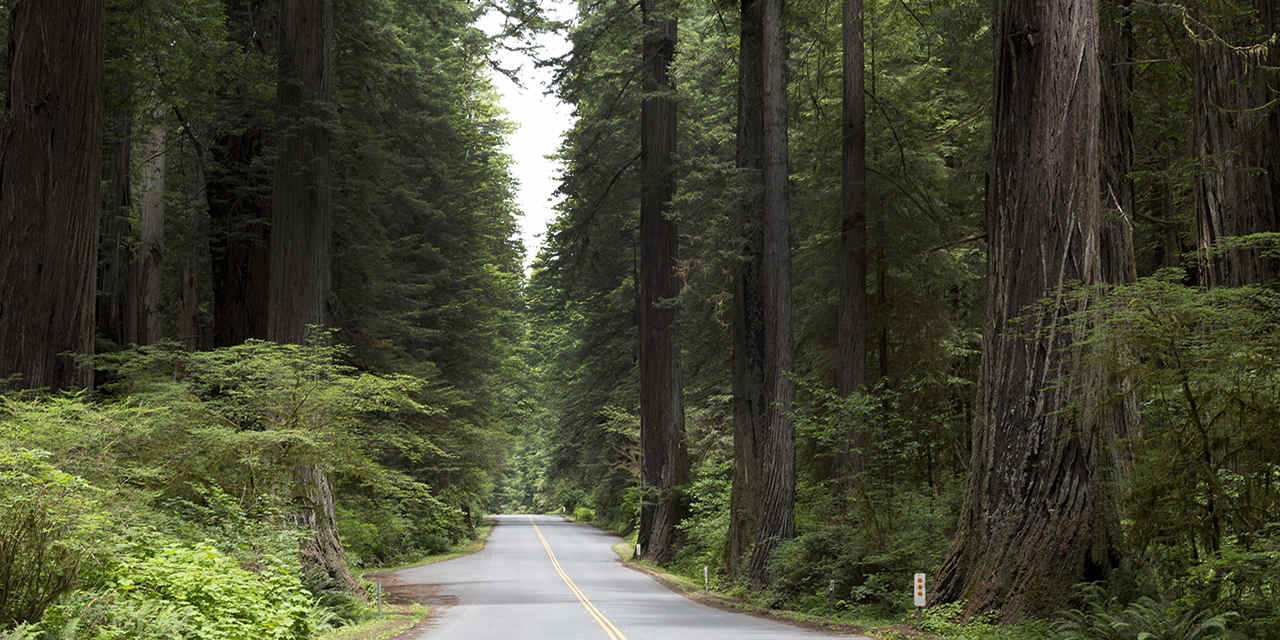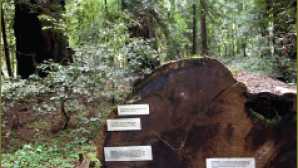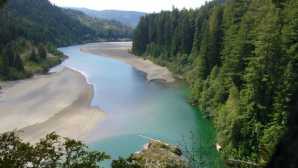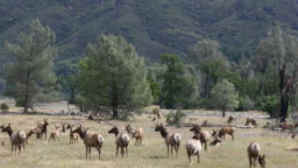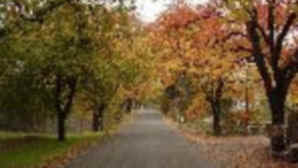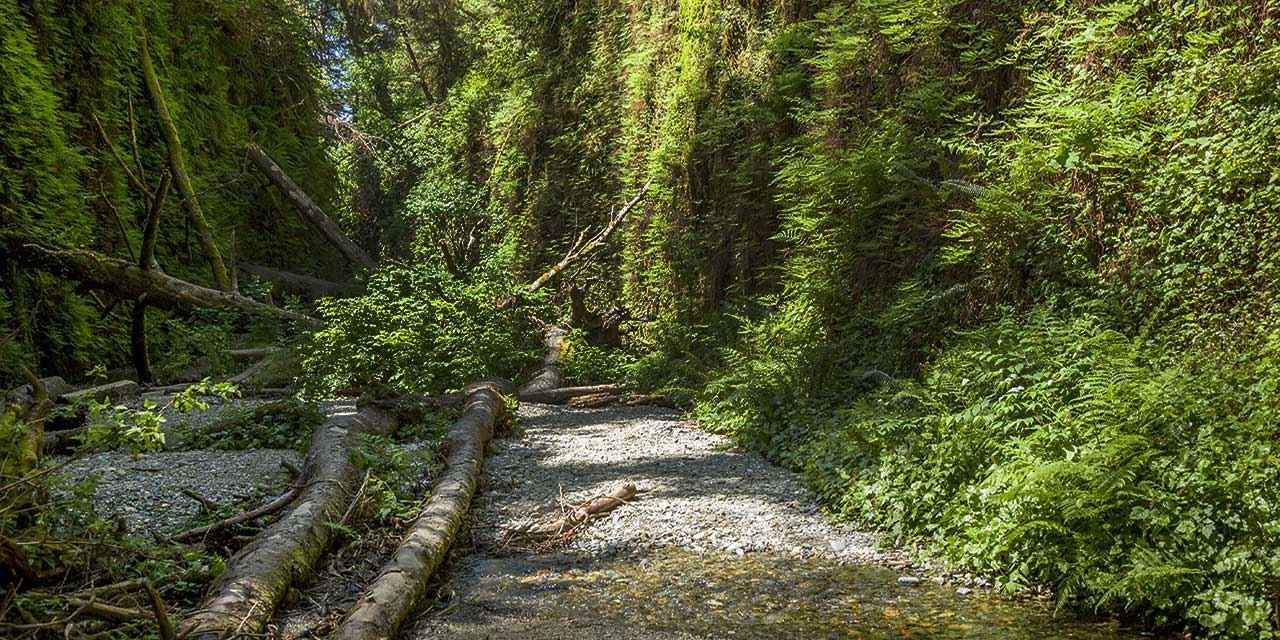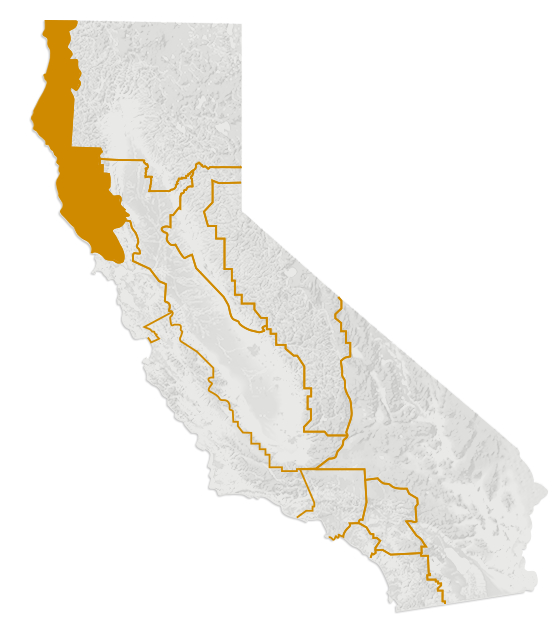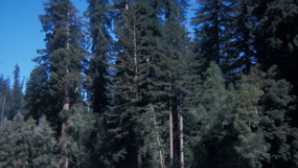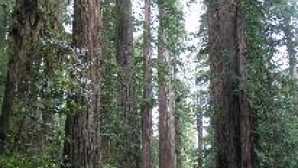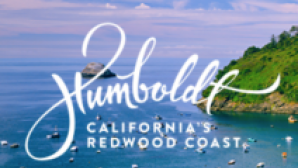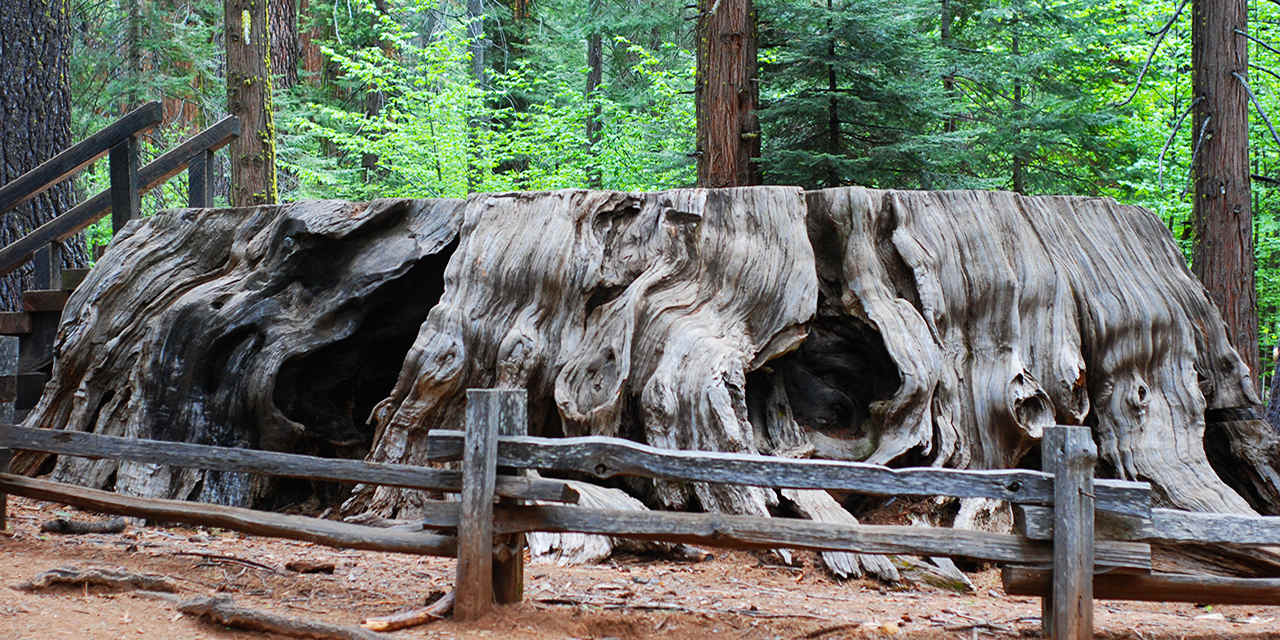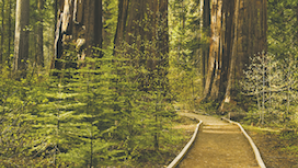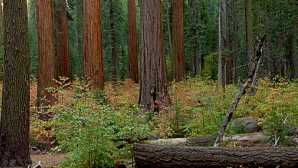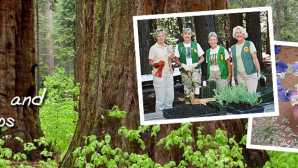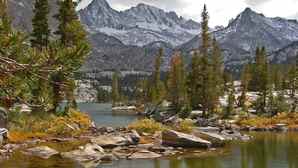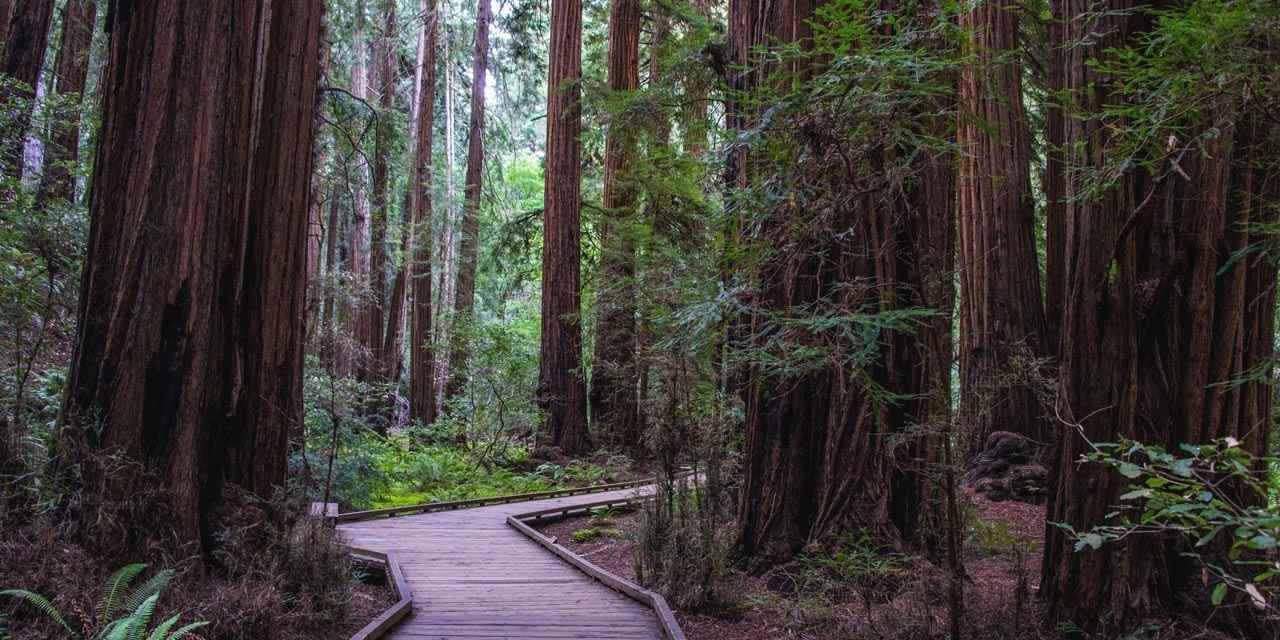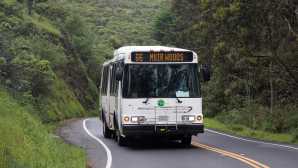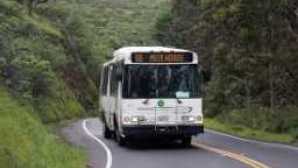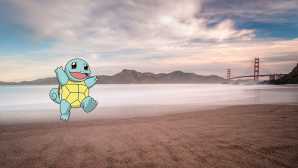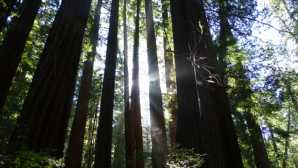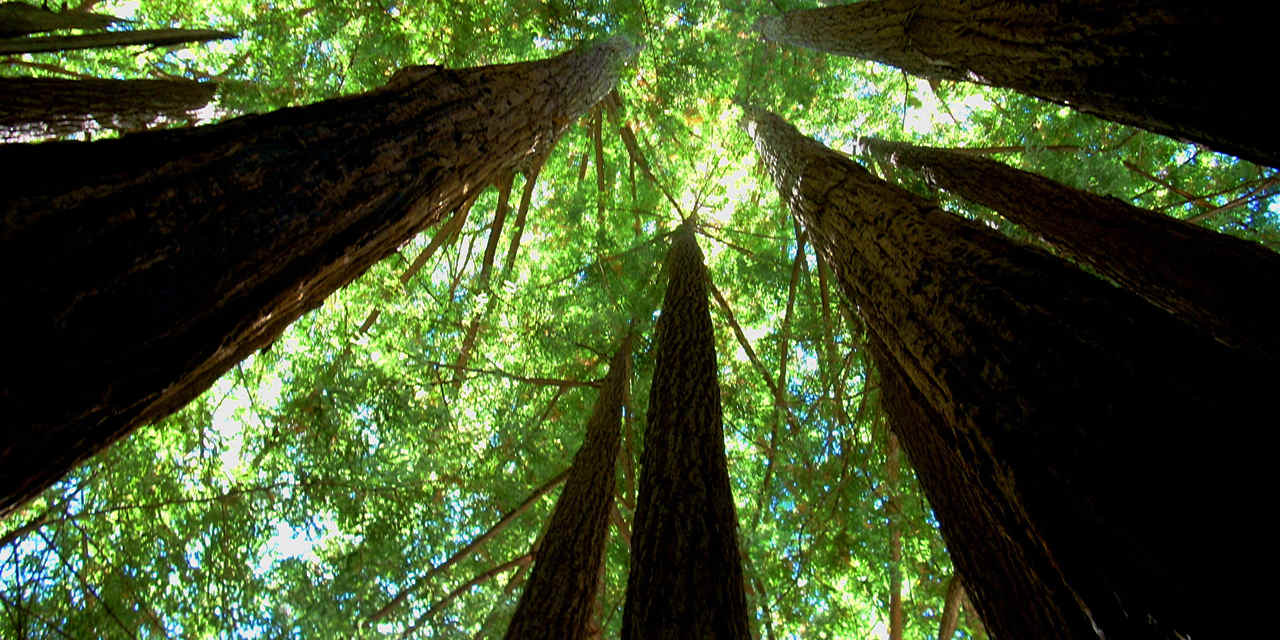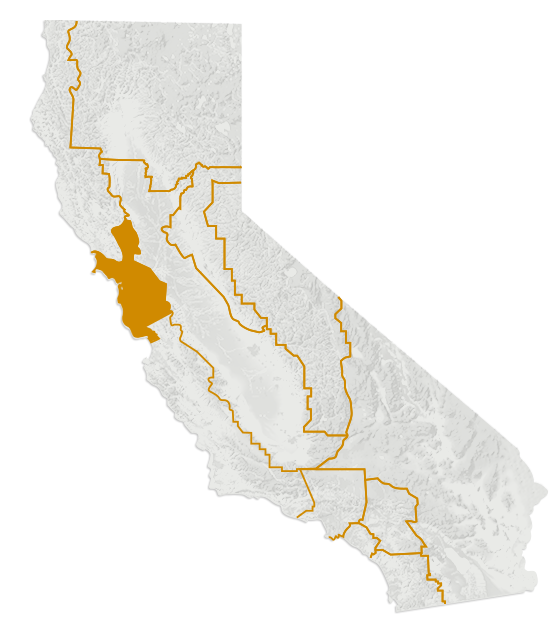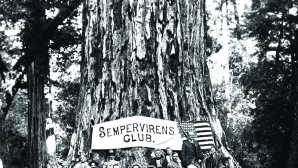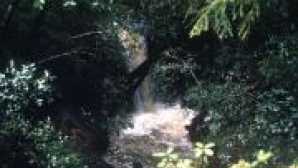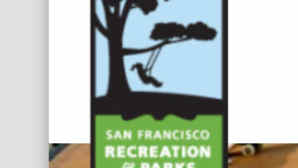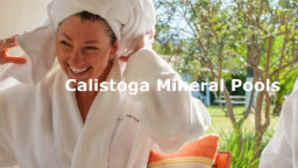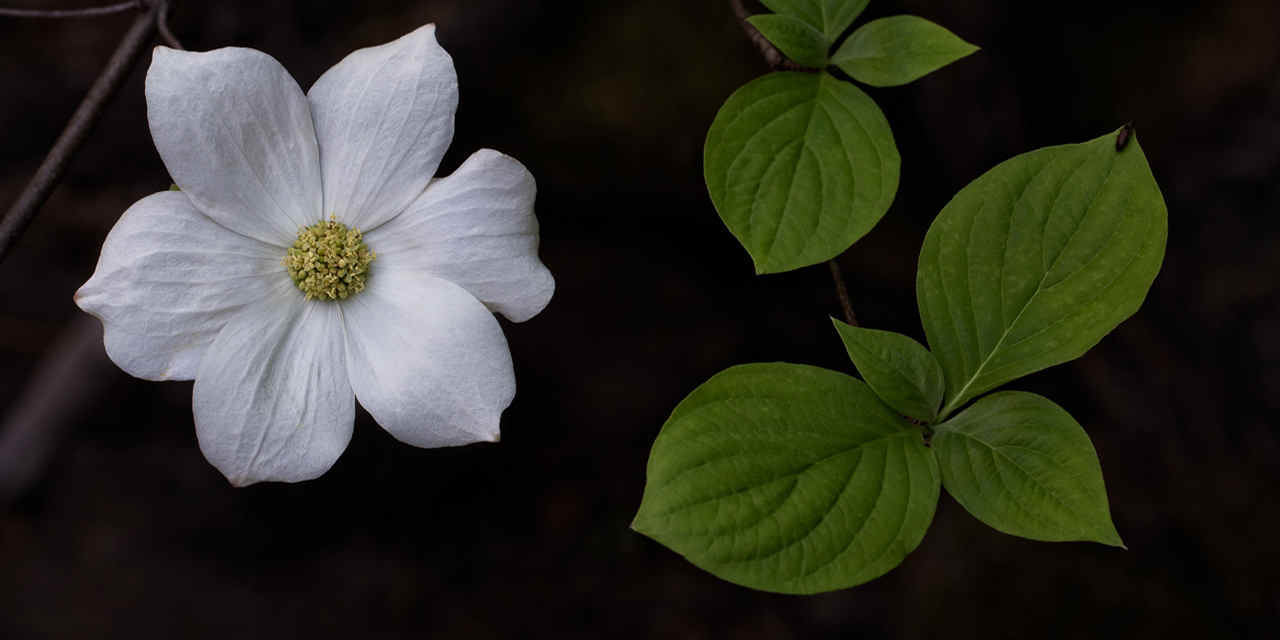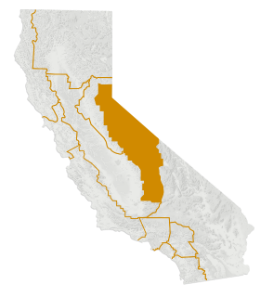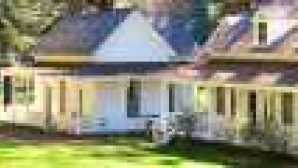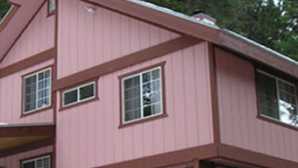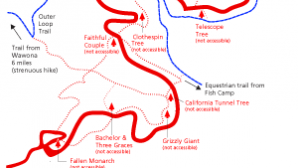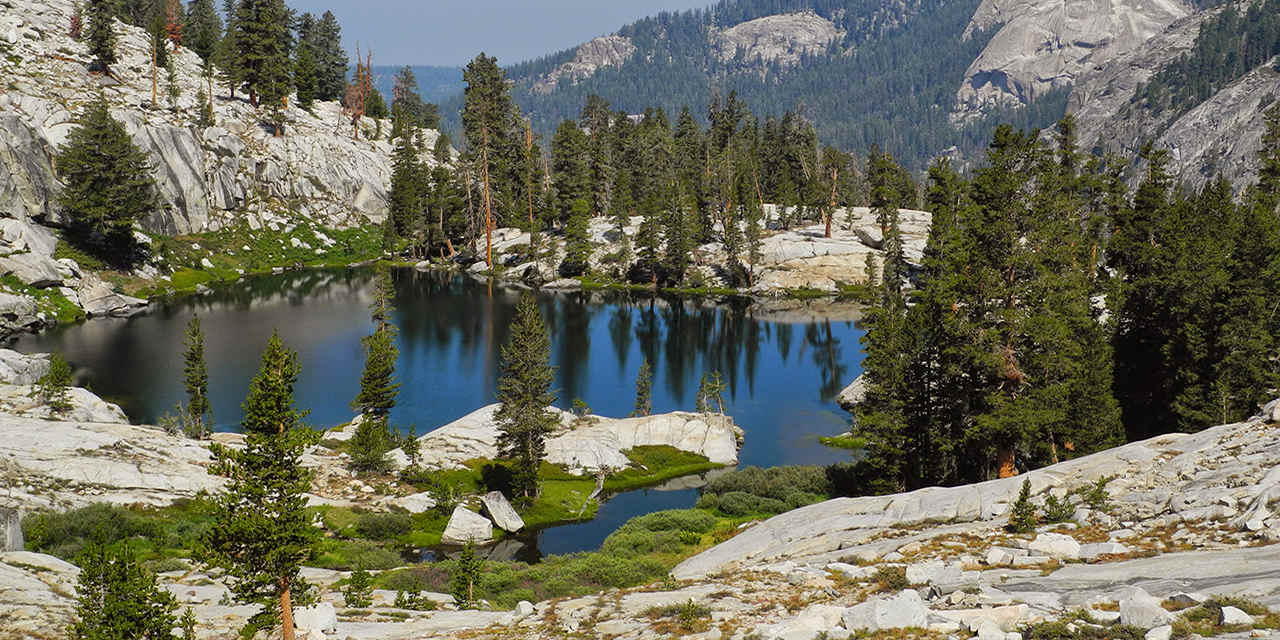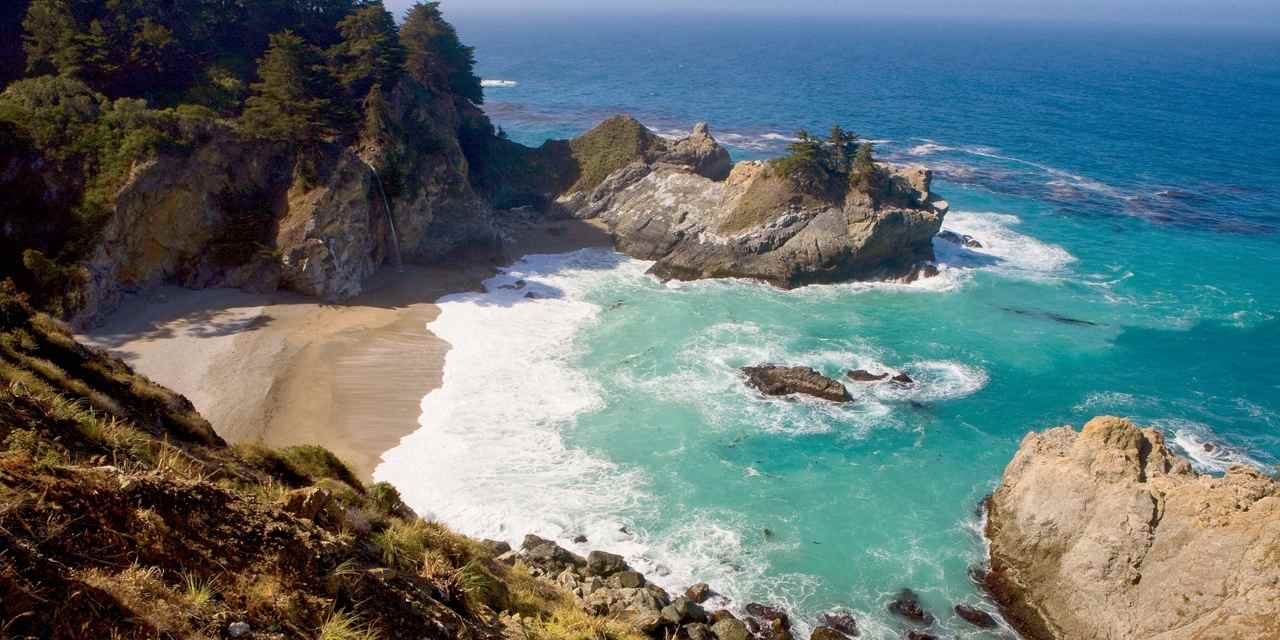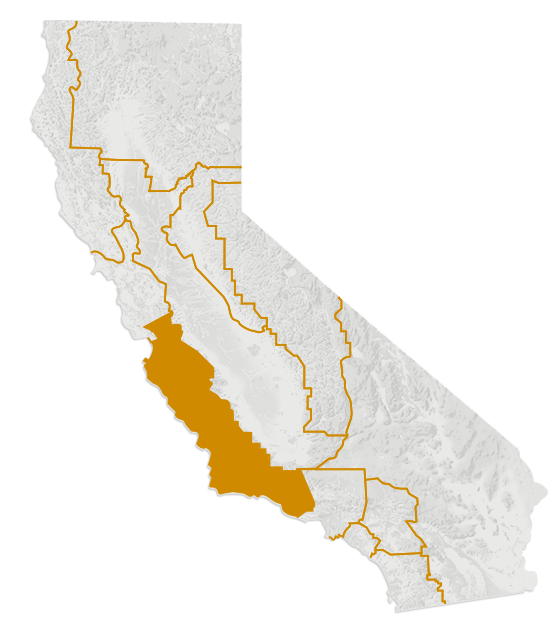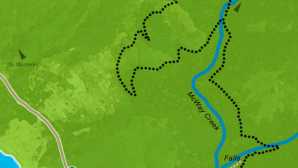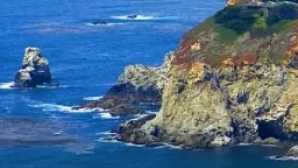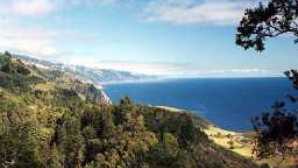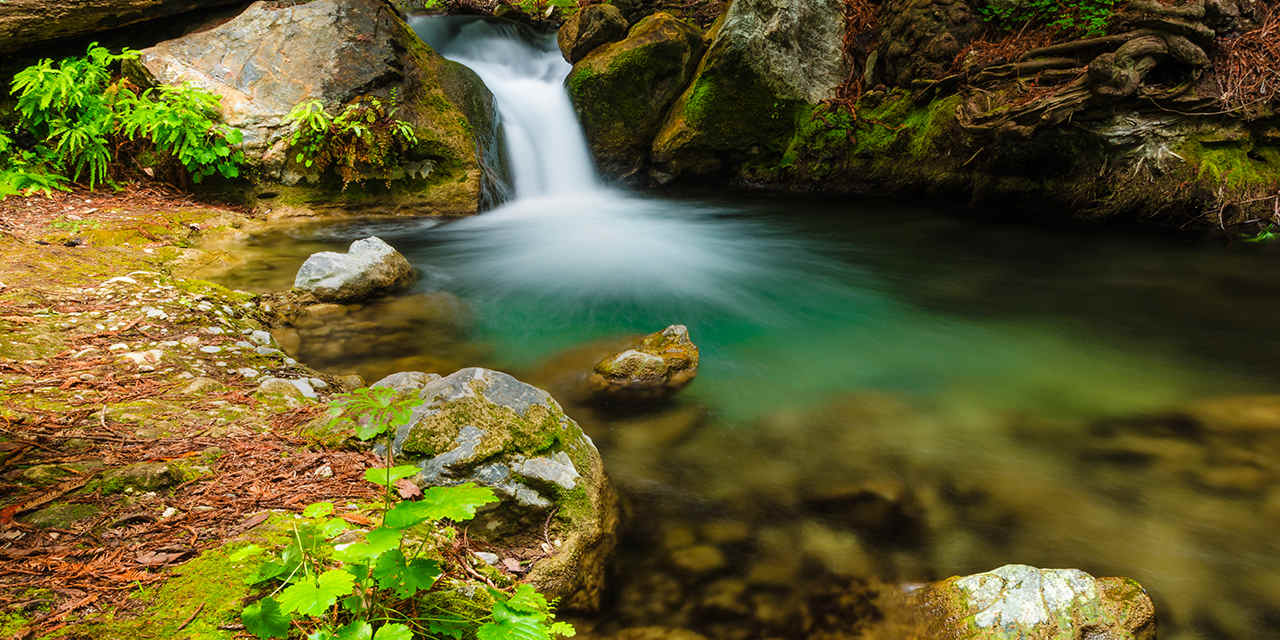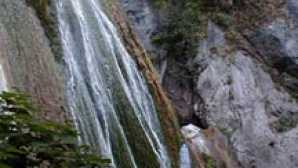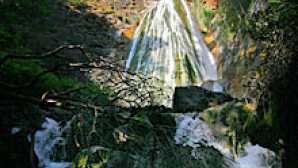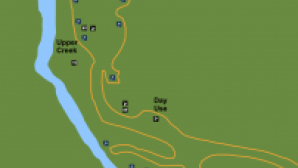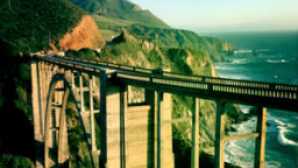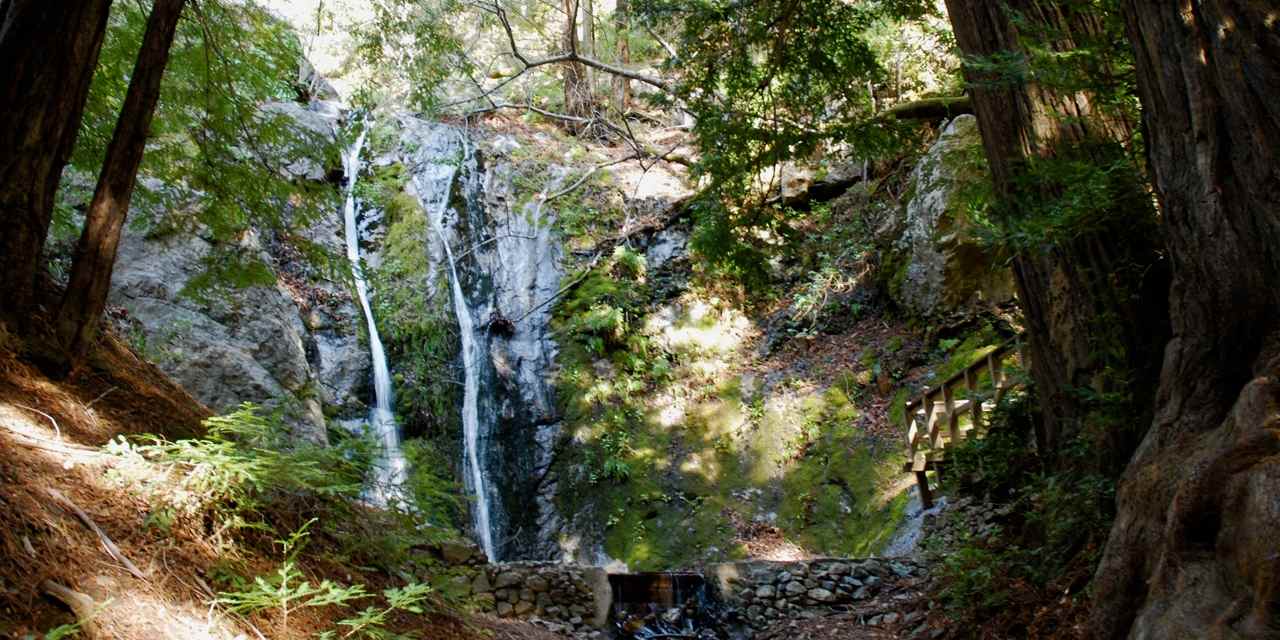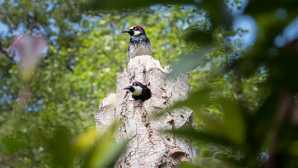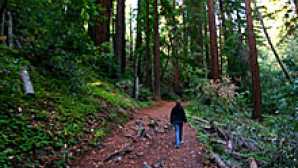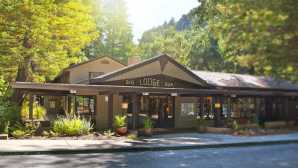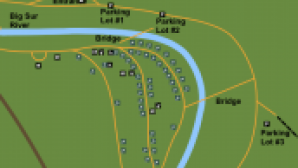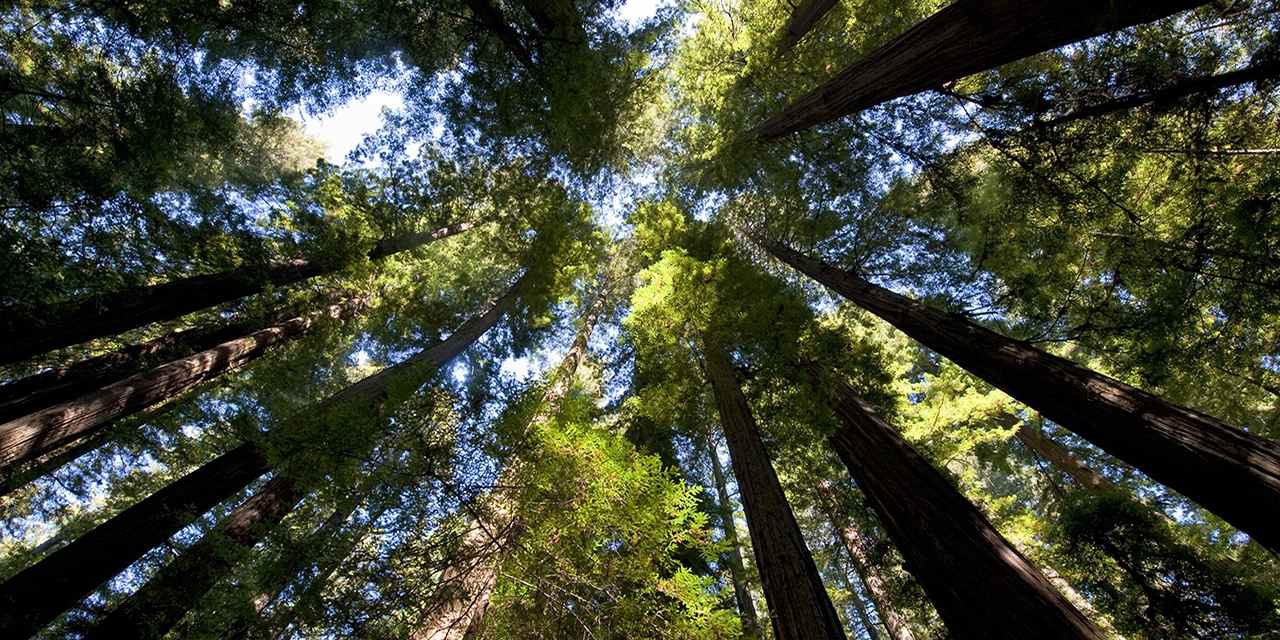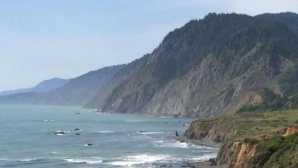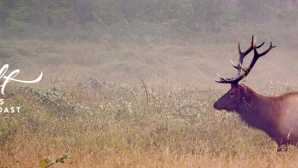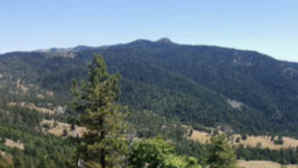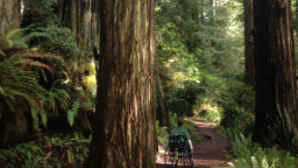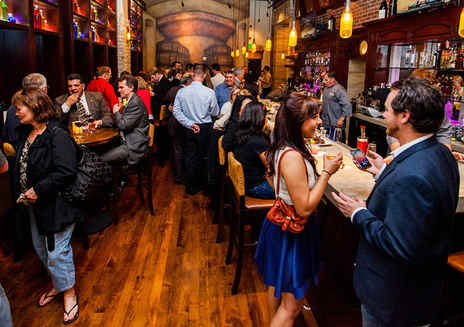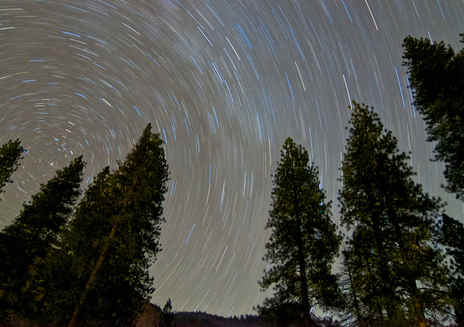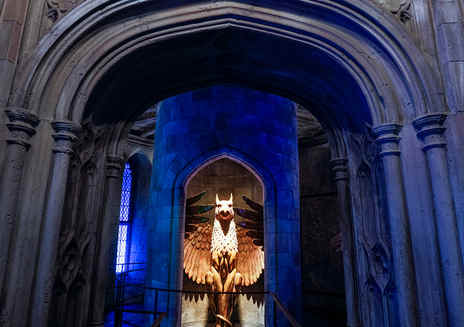For the latest on COVID-19 (Coronavirus) click here
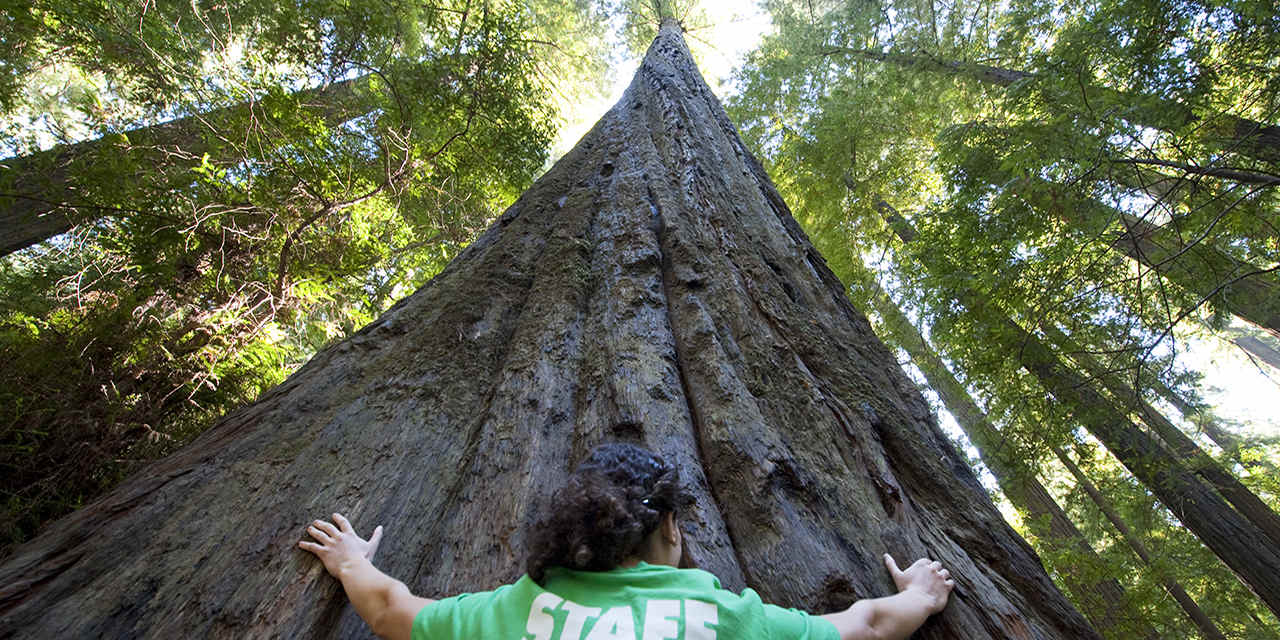
Places to see big trees
Get ready to look up—way, way up. California has the biggest, tallest trees on the planet. Discover them at outstanding parks and preserves dotting the state. Coast redwoods, some topping out at well over 350 feet/107 meters (and still growing) live in a narrow coastal band from roughly Big Sur to the Oregon border. Giant sequoia, with trunks measuring more than 30/9 meters feet in diameter, grow on the west side of the Sierra Nevada, with some trees starting out as seedlings some 3,500 years ago. Here’s where to find them.
Avenue of the Giants
Yes, there are taller redwoods in California. But the soaring trees lining this stretch of U.S. 101 seem plenty tall enough, creating a dramatic wall of enormous russet trunks rocketing skyward as you wind through the forest.
Some of the route’s 32 miles/56 kilometers passes through the impressive stands protected within Humboldt Redwoods State Park—and you’ll be missing something special if you don’t take the time to walk along its fern-lined paths, and learn about these remarkable trees and their history in the informative museum.
Aside from the park and the sheer beauty of the drive, there are other historic finds along the way, such as the lookalike cottages in the tiny town of Scotia, once a booming “company town” for the local lumber company. And there are a handful of gift shops with tables made out of redwood burls, and folksy attractions that can add a kitschy charm to your visit. Order an espresso in the famous One-Log House (we know it’s famous because it says so right on its sign) and the privately owned (in other words, there’s a fee) Shrine Drive-Thru Tree. This is the kind of stuff that it really is fun to buy a bumper sticker and say you did it when you get back home.
Redwood National Park
Even if you’re a pro basketball player, you can’t help feeling downright puny in this stunning preserve, where soaring redwoods line up like living skyscrapers. Start your trip at the excellent Thomas H. Kuchel Visitor Center, one mile south of Orick. Of the five visitor centers in Redwood National and State Parks, this one is the largest, with numerous exhibits and a video on redwood ecology, a great bookstore, and access to a sandy beach. Next, do a little driving. Start 5 miles/8 kilometers north of the small hamlet of Klamath at the Klamath River Overlook, where the freshwater river meets the Pacific Ocean at a huge estuary. Perched 650 feet/198 meters above the sea, this overlook point is a prime spot for watching migrating gray whales (best time is December to April). Be sure to walk the short and easy path to the lower overlook for dramatic views of crashing surf. Then head south to cruise the Coastal Drive (great for mountain biking too). This 9-mile/13-km-long road follows the coastline, passing a radar station that was camouflaged to look like a farmhouse and barn during World War II.
Stop at the picnic area at High Bluff Overlook, then scan the sea for whales, sea lions, brown pelicans, and, in spring and summer, thousands of seabirds nesting on offshore rocks. If you want to put some miles on your hiking boots, the Klamath area features a lovely coastal walk, the Yurok Loop, which visits pristine Hidden Beach (1 mile/2 kilometers round-trip). Or, for an easy stroll beneath towering redwoods, walk the 1-mile/2-km Lady Bird Johnson Grove loop.
Calaveras Big Trees State Park
Established in 1931 to preserve a stunning stand of giant sequoias, this park offers one of the easiest places to see these towering trees. Head 4 miles/6.5 km east of Arnold, in the Gold Country, to the preserve, then put on your walking shoes and follow trails to North Grove, the most visited part of this 6,498-acre/2,630-hectare park, as well as quieter South Grove. Reserve a site at one of the two large campgrounds, or pitch your tent at one of five more remote walk-in sites. Summer is the busiest time of year, but spring offers showy white dogwood blossoms, and the colorful leaves of autumn create a striking contrast with the russet sequoia trunks. Seasonal activities offered by the park include campfire talks and guided walks.
Muir Woods National Monument
To experience one of California’s most unforgettable must-sees, visit this remarkable grove, a hop-skip north of San Francisco. Tucked into an ocean-facing fold of Mount Tamalpais, the signature peak just north of the Golden Gate Bridge in Marin County, Muir Woods National Monument protects the last stand of uncut old-growth coast redwoods in the Bay Area, where loggers had all but denuded the region by the late 1800s.
“The best tree-lover’s monument that could possibly be found in all the forests of the world.”
Originally established as a national monument in 1908 by President Theodore Roosevelt, it was named in honor of the revered naturalist John Muir, who declared the site was “the best tree-lover’s monument that could possibly be found in all the forests of the world.” Even on busy days in summer, there is a remarkable hush here, especially if you arrive in early morning. Follow raised boardwalks, built to protect the redwoods’ sensitive root structure, to see the arrow-straight redwoods, some over a century old, soaring 250 feet/76 meters overhead. For an unforgettable experience, check the park’s activities calendar to go on a guided walk at dusk.
Keep in mind that the road to the park is twisty and narrow, and parking lots often fill up early in summer and on weekends. (Miss a spot in the lots and it can be a long, long walk to your car.) Your best bet is to take the public Muir Woods shuttle (March through October) from nearby Sausalito, or book a tour with a local shuttle service or tour operator.
Big Basin Redwoods State Park
This remarkable preserve, California’s oldest state park, is an emerald gem in the Santa Cruz Mountains. With more than 80 miles/128 kilometers of trails winding through redwood groves and other lush habitats, Big Basin makes an appealing weekend getaway for people in the Silicon Valley, about an hour’s drive west. Moms and dads love letting the kids loose to dabble their toes in clear streams, or watching them conjure up enough courage to kiss a banana slug (ask a local; it’s a belt-notch experience for many a Northern Californian).
Big Basin offers a variety of campsites, including 38 walk-in sites—a short walk lets you pitch your tent in ultimate peace and quiet. Hike, mountain bike, or ride horses on designated routes. Trekkers love the 10.5-mile/17-km Skyline to the Sea Trail, which runs along Waddell Creek to the ocean and nearby Theodore J. Hoover Natural Preserve. There are also plenty of gentle, scenic rambles, such as the 4-mile/6-km Sequoia loop trail (complete with a small waterfall), and .5-mile/1-km Redwood loop trail that takes visitors to some of the park’s tallest trees. Pick up maps and hiking tips from rangers at park headquarters, and ask about guided twilight hikes and campfire programs.
Wawona & Mariposa Grove
When the Native Americans travelled between the foothills and Yosemite Valley, Wawona was the halfway point on their journey. They called it Pallachun, meaning “a good place to stay.” This Indian encampment is now the small community of Wawona, home to the historic Big Trees Lodge (formerly known as the Wawona Hotel) and a private community of mountain cabins, many available to rent. Stay overnight (to relax on the wide veranda on one of the hotel’s Adirondack chairs is a Sierra rite of passage), or just spend a day in the area.
The hotel reflects its 19th century roots with lights and other details that echo the elegance of the era.
In summer, take a dip in nearby swimming holes, follow the switchback hiking trail to Chilnualna Falls, and get a history lesson at Pioneer Yosemite History Center (and take a horse-drawn carriage ride). The hotel itself has a small visitor centre with information on more area activities. In the evening, pianist and singer Tom Bopp performs vintage songs—from cowboy tunes to sentimental ballads—that span Yosemite's history.
Wawona is also adjacent to Yosemite National Park’s south entrance—which, as of summer 2018, also offers good access to the magnificent Mariposa Grove. The oldest of Yosemite’s sequoia groves, Mariposa dates back to 1864, when Congress passed legislation to permanently preserve both the grove and Yosemite Valley. The grove’s recent restoration was designed to revive ecological processes, protect wildlife, and minimize the impact of car traffic on the 500 mature giant sequoias. The restored grove has a consolidated parking area, farther away from the trees (catch the shuttle from the south entrance), and some roads have been turned into hiking trails, including a boardwalk walkway. You can also see giant sequoias in other parts of Yosemite: Visit Tuolumne Grove, on the Tioga Road just east of Crane Flat, and Merced Grove, located on Big Oak Flat Road east of the Big Oak Flat Entrance.
Spotlight: Sequoia & Kings Canyon National Parks
Famous for their giant sequoias, soaring mountains, deep canyons and roaring rivers, this tandem set of parks have plenty to see, even...
JULIA PFEIFFER BURNS STATE PARK
Want a short hike with a huge reward? The ½-mile round-trip Waterfall Overlook Trail at Julia Pfeiffer Burns State Park could be the biggest-bang-for-not-much-work hike on the planet. The almost-flat stroll ends at an oceanfront overlook with flawless views of McWay Falls, a favourite spot of Big Sur pioneer woman Julia Pfeiffer Burns, for whom the park is named. Let’s just say Julia had good taste. The plume of water drops some 80 feet from the top of a granite cliff to a sandy cove below (not even footprints on the sand mar the perfection, as this beach is closed to the public).
If you’re up for more of a leg stretch, also hike the 1-mile round-trip Partington Cove Trail. The steep but short hike leads over a wooden bridge down to a 60-foot tunnel. Walk through and emerge onto the rocky beach. A few of the trails at this picturesque state park are closed due to erosion—check the trails section of the park’s website for the latest information before traveling.
LIMEKILN STATE PARK
Make a stop along Highway 1 to visit Limekiln State Park, where you’ll discover a piece of 19th-century history while hiking trails through towering coastal redwoods. At this Big Sur park two miles south of Lucia, camping, swimming (in Limekiln Creek and at a beach), and spotting marine life carries huge appeal, but it’s undoubtedly the historic kilns that are the park’s signature attraction.
As the name suggests, Limekiln State Park was once the site of a booming limekiln operation (more on that below, if you’re scratching your head), and short walks let you not only explore the limekiln ruins but also visit the aforementioned beach and Limekiln Falls.
History explains how, in the late 1880s, limestone was harvested from a nearby slope, then fed into the hulking kilns. Intense heat—with kiln fires fuelled by felled redwoods—extracted pure lime, a key ingredient in construction cement, which was used in buildings in San Francisco and Monterey.
Once all the nearby reserves of limestone and redwoods were used up, the kilns were abandoned. Slowly, the forest recovered, and the second-growth redwood stands in this park today make for a pleasant and shady escape (not to mention one with an interesting past). In the midst of this intensely naturalistic setting, the four iron-and-stone kilns rise, scarred and imposing, like monuments to some bygone civilization. It’s a dramatic contrast that’s likely to spark even the most seasoned sightseer’s imagination.
Pitch a tent—car and RV camping is not accommodated—in one of the 29 campsites located Creekside, on the beachfront, and in the forest. You can reserve a site up to six months in advance.
Pfeiffer Big Sur State Park
California’s coast redwoods meet their southernmost habitat along the Big Sur coast, and this gem of a park, located 26 miles south of Carmel, is a great way to sample their deep shade and cathedral-like beauty. Hiking, biking, and riding RVs along the trails and roads, swimming in the Big Sur River, camping—the number of outdoor activities one can enjoy here in the midst of stunning surroundings make it one of the most popular parks along Highway 1.
The park’s roots are in homesteading: John Pfeiffer settled on some 160 acres here (his 1884 cabin, originally perched high above the Big Sur River Gorge, has been reconstructed along the park’s Gorge Trail). In the 1930s, Pfeiffer’s land became the first nugget of this beautiful park after he spurned offers from developers and instead sold it to the state of California, a decision that prompted the State Park Commission to name its newest addition after him.
The peaks of the Santa Lucia Mountains rise up dramatically from the Big Sur River Gorge; keep an eye out while walking along the banks for black-tailed deer, raccoons, skunks, birds such as dippers, belted kingfishers, and wild turkeys, and even the occasional bobcat. A small but appealing network of well-marked trails wends through the 1,000-acre preserve; spectacular views of the Big Sur Valley, the Big Sur River Gorge, Pacific Ocean and shoreline abound, but be aware that there is no beach or ocean access.
The large campground located in the park can accommodate hikers, bikers, car campers, and RVers. Reservations tend to fill up six months in advance, even in winter, so be sure to plan ahead. Another option is to stay in one of the 62 rustic cottages at the park’s unpretentious Big Sur Lodge.
Humboldt Redwoods State Park
Sure, you can simply stick your head out the window of your car to see towering trees lining Avenue of the Giants, a 32-mile/52-km-long, redwood-trimmed stretch of Highway 101. But we strongly suggest you pull over, get out, smell the piney air, hear the burbling creeks and rivers, and look way, way up to truly appreciate these amazing trees, as well as the emerald-green habitat where they live.
Conveniently, there are plenty of places to do that along the way, most notably in 53,000-acre/21,448-hectare Humboldt Redwoods State Park. Avenue of the Giants actually runs right through the park, so you can easily turn off to explore on an assortment of loop trails, like the 7.5-mile/12-km Bull Creek Loop, which lets you get a mini-glimpse of the remarkable Rockefeller Forest, home to the world’s 2nd, 4th, 6th, and 8th tallest trees. Also visit Founders Grove, honoring the people behind the formation of Save the Redwoods League in 1918, an organization that played a critical in the permanent protection of these remarkable trees.
Insider’s Guide to California’s Redwood Coast
What makes California’s Redwood Coast so special? Maybe it’s the primeval wilderness that’s inspired legends from Paul Bunyan to Bigfoot. Perhaps it’s the 175 miles of rugged coastline or the cozy seaside towns. Or could it have something to do with the fact that the tallest trees in the world spread out here across millions of acres? The truth is that there are countless reasons to visit California’s Redwood Coast. We’ve put together this insider’s guide to help you navigate this must-travel spot.
How to Get There
Wonder abounds in the Redwood Coast—and part of that mystery can be exactly where the heck it is. The Redwood Coast extends along the Northern California shore from Shelter Cove to the mouth of the Klamath River. Its forests are actually a collection of parks that together comprise Redwood National and State Parks and Humboldt Redwoods State Park, as well as other public and private lands.
Don’t overthink it—just go. You can get there in roughly four hours from either San Francisco or Sacramento—or fly straight into California Redwood Coast - Humboldt County Airport. Thanks to a temperate climate, the region welcomes visitors any time of year. For the sunniest weather, visit between June and September; the remaining months will be cooler and wetter but less crowded.
Where to Stay
There are really two ways to go when visiting the Redwood Coast: Pitch a tent at one of the region’s more than 30 campgrounds, or check into a charming bed-and-breakfast in a coastal town. Some of the best back-to-nature spots include Gold Bluffs Beach Campground with its sand dunes and magical canyon, or the starry-skied, trails-filled Albee Creek Campground.
For a more luxurious experience with access to a downtown, try the Lost Whale Inn, a bed-and-breakfast in Trinidad—reserve the Sea Lion Room for a wall of windows overlooking ocean cliffs—or Carter House Inn in Eureka (don't miss the wine list, which has more than 3,800 bottles!).
Start Here
Standing more than 300 feet tall, the coast redwoods (Sequoia sempervirens) will take your breath away. Drive the 31-mile stretch along Avenue of the Giants or the 10-mile Newton B. Drury Redwood Scenic Parkway to get a sense of the massive trees right from your car.
The stunning circle of trees in Lady Bird Johnson Grove are reachable through a relatively easy 1.5-mile hike—or you can spend the day exploring the otherworldly delights of the 9-mile Fern Canyon Loop Trail, which takes hikers through Prairie Creek Redwoods State Park down to a 50-foot canyon covered in ferns. In 2018, Redwoods National Park turns 50 (the state parks are a bit older), and the Save the Redwoods League celebrates its 100th anniversary. Check their sites for deals—such as free entry on the second Saturday of each month—to the parts of the park that are not normally free.
Experience the Majesty of the Coast
See the forest, enjoy the trees, but don’t forget the “coast” component. Hike the California Coastal Trail at Humboldt Lagoons, head to Moonstone Beach to watch pelicans swoop above the mossy cliffs, or check out Agate Beach to search for its precious namesake rock. If you’re visiting in November, December, March, or April, you have a good chance of witnessing the gray whale migration. Bring a pair of binoculars to High Bluff Beach, or get up close and personal with an ocean tour from Pacific Outfitters.
Taste Nature’s Bounty
Fresh oysters, hard cider, grass-fed beef, and hoppy beer. These Humboldt County specialties are must-tries...perhaps even in that order. For an up-close look at harvesting delicious mollusks, book a spot on Humboldt Bay Oyster Tours. Or skip the lesson and go straight for the good stuff at Arcata’s Salt Fish House and Eureka’s Humboldt Bay Provisions. Among the evergreens, a pint of cider just feels right, and you get one locally pressed from Clendenen's Cider Works or Humboldt Cider Company. A handful of excellent breweries can be found up and down the coast, including Lost Coast Brewery, Redwood Curtain Brewing Company, and Eel River Brewing Company. The reigning champ for best regional restaurant is Arcata’s Folie Douce, which serves daily selections of the area’s buttery beef.
Don’t Miss These Only-in-the-Redwoods Spots
The Redwood Coast is at once wonderful, wild, and weird. Even if you only have two hours, it’s worth the visit—but we recommend making time for the area’s unique experiences, like the Shrine Drive Thru Tree. If you have a hard day of hiking on the books, make a reservation at Finnish Country Saunas and enjoy a fun and funky experience at one of the private outdoor hot tubs. Try viewing the forest from a saddle with the Redwood Creek Buckarettes. Two-hour horseback tours take riders through old-growth forests—and yes, you can also ride your horse through a tree. Finally, make sure to soak in the sunset from the deck of Eureka’s Madaket. Wednesday through Saturday (May to early October), the historic ship takes passengers on a Cocktail Cruise around the bay, serving drinks below deck from the smallest licensed bar in California.


